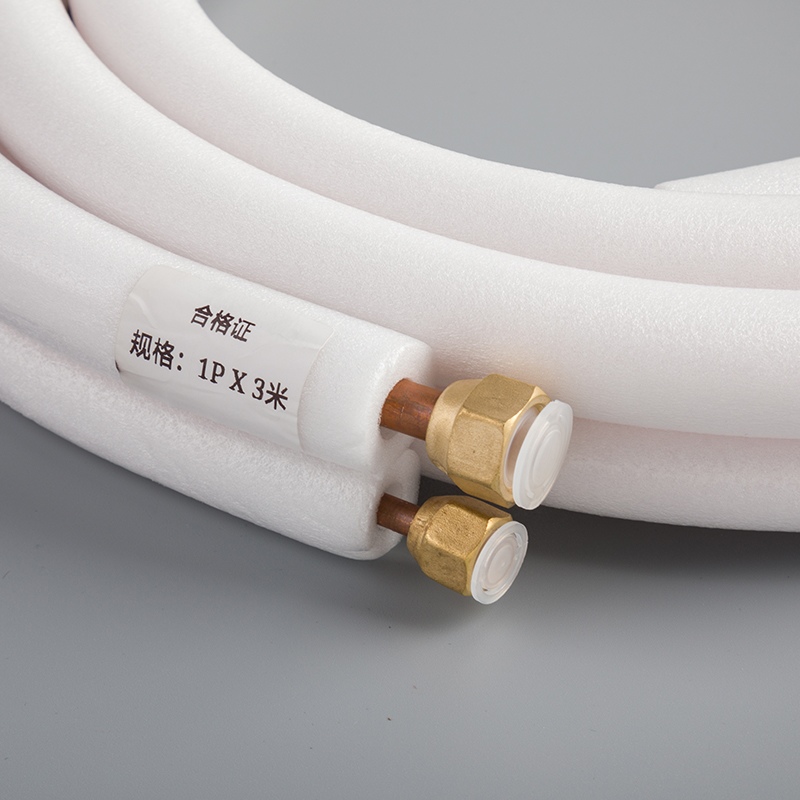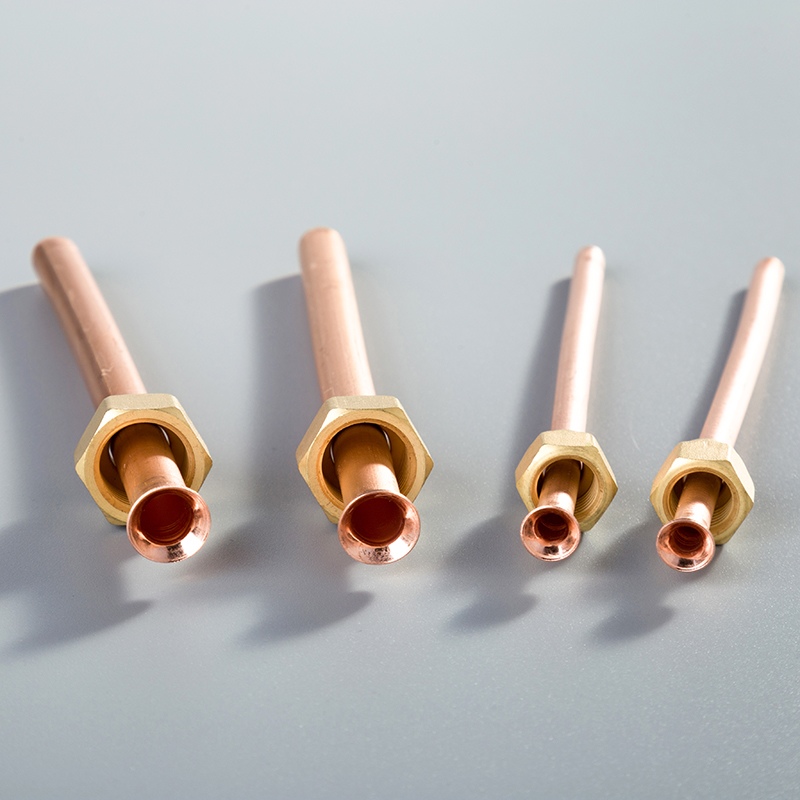Steps to Install Copper Pipe Insulation

Steps to install copper pipe insulation is a crucial step in enhancing energy efficiency and preventing potential damage. By properly insulating your copper pipes, you can significantly reduce heat loss and save on energy costs. The process of installing copper pipe insulation not only ensures optimal performance but also extends the lifespan of your plumbing system. Understanding the importance of insulating copper pipes sets the foundation for a more sustainable and cost-effective approach to home maintenance.
Preparing for Installation
Gathering Necessary Tools and Materials
To begin the installation process of copper pipe insulation, you will need to gather the essential tools and materials. Here is a breakdown of what you will require:
List of required tools:
Sharp knife for cutting insulation
Tape measure for accurate measurements
Utility knife for precise cuts
Brush for applying brazing agent evenly
List of required materials:
Aflex-Eco nitrile insulation foam tubes with various wall thicknesses
Adhesive or tape for securing the insulation in place
Safety gear including gloves and goggles for protection
Pipe clamps or rail systems for supporting insulated pipes
Safety Precautions
When working on installing copper pipe insulation, safety should always be a top priority to prevent any accidents or injuries. Here are some safety precautions to keep in mind:
Importance of safety gear:
Wear protective gloves to shield your hands from sharp edges.
Use goggles to protect your eyes from debris while cutting insulation.
Handling copper pipes safely:
Be cautious when handling sharp tools like knives.
Ensure proper ventilation when using adhesives or brazing agents.
Measuring and Cutting the Insulation
Measuring the Pipes
To accurately measure the pipes for copper pipe insulation, start by placing your tape measure at one end of the pipe. Extend it along the length of the pipe to determine the exact measurement needed. Ensure you record both the length and diameter of each section to cut the insulation precisely.
How to measure the length and diameter
Begin at one end of the pipe with your tape measure.
Extend it along the entire length to get an accurate measurement.
Record both the length and diameter for each section.
Tips for accurate measurements
Double-check your measurements to avoid errors.
Measure multiple times to ensure precision in cutting.
Cutting the Insulation
When cutting insulation for copper pipes, having the right tools is essential. A sharp knife will allow you to make clean cuts without damaging the material. Follow a step-by-step process to ensure that each piece fits snugly around your pipes.
Tools for cutting insulation
Sharp utility knife for precise cuts.
Scissors may be used for smaller sections or details.
Step-by-step cutting process
Mark where you need to cut on the insulation.
Use a sharp knife to cut along this line carefully.
Ensure a straight edge for a seamless fit around your pipes.
Installing the Insulation

Positioning the Insulation
To properly position the insulation, start by aligning it with the copper pipe. Ensure that the insulation runs parallel to the pipe's length, covering it entirely. This alignment is crucial for effective insulation.
Aligning the insulation with the pipe
Begin by holding one end of the insulation against the pipe.
Continue wrapping it around in a straight line along the length of the pipe.
Ensure there are no gaps or overlaps in the insulation for a seamless fit.
Ensuring a snug fit
Press firmly along the entire length of the insulation to secure it tightly around the pipe.
Check for any loose sections and adjust them to guarantee a snug fit throughout.
Securing the Insulation
Securing copper pipe insulation is essential to prevent it from slipping or coming loose over time. Using adhesive or tape can help maintain a tight seal and ensure long-lasting performance.
Using adhesive or tape
Apply adhesive evenly along the seam where the insulation meets itself.
Alternatively, use tape to wrap around and secure both ends of the insulation together tightly.
Ensuring a tight seal
Press down on all joints and seams to ensure they are securely fastened.
Check for any areas where air might escape and reinforce them with additional adhesive or tape as needed.
Insulating Around Bends and Joints
When insulating copper pipes that have bends or joints, special care is required to maintain proper coverage and protection. By cutting and securing insulation effectively, you can ensure consistent thermal efficiency throughout your plumbing system.
Cutting insulation for 90-degree bends
Measure and mark where you need to cut at a 45-degree angle for each bend.
Carefully slice through the material following your markings to create precise cuts.
Wrap each piece around its respective bend, ensuring a tight fit without any gaps.
Securing insulation around joints
For joints in copper pipes, cut small pieces of insulation to cover these areas completely.
Use adhesive or tape to secure these smaller sections tightly around each joint point.
Ensure that all joints are well-insulated to prevent heat loss or condensation buildup.
Final Checks and Maintenance
Inspecting the Installation
To ensure the effectiveness of your , periodic inspection is crucial. By checking for gaps or loose areas, you can maintain optimal thermal efficiency throughout your plumbing system. Regular assessments help in identifying any potential issues that may arise over time.
Checking for gaps or loose areas
Examine the entire length of the insulated pipes meticulously.
Look for any gaps where air might escape or moisture could seep in.
Address any loose sections by reinforcing them with additional adhesive or tape.
Ensuring complete coverage
Verify that the insulation covers every inch of the copper pipes.
Check for any areas where the insulation might be thin or damaged.
Ensure a tight seal at all joints and bends to prevent heat loss.
Regular Maintenance Tips
Maintaining your copper pipe insulation is key to its longevity and performance. Periodic inspection and addressing wear and tear promptly can save you from costly repairs down the line. Here are some essential maintenance tips to keep in mind:
Periodic inspection
Schedule routine inspections based on the type of insulation material used.
Look out for signs of deterioration such as pest damage, moisture ingress, or compression.
Conduct repairs as soon as you notice any issues to prevent further damage.
Addressing wear and tear
Replace worn-out insulation promptly to maintain thermal efficiency.
Use digital tools to track the condition of your insulation over time.
Consider upgrading to more durable materials if frequent replacements are necessary.
In wrapping up, installing copper pipe insulation is a fundamental step towards enhancing energy efficiency and safeguarding your plumbing system. The process not only reduces heat loss but also prevents freezing, ensuring consistent water temperatures throughout your home. By following the outlined steps diligently, you can achieve significant savings on energy bills while maintaining optimal performance. Remember to prioritize safety measures and conduct regular maintenance checks to prolong the lifespan of your insulation. Share your experiences or seek guidance from others to create a more sustainable and efficient living environment.
See Also
5 Ways to Safely Install Copper Pipe Coils at Home
Simple Guide: Measuring Copper Pipe for DIY Achievement
Exploring the Best Insulation for Copper Pipes


